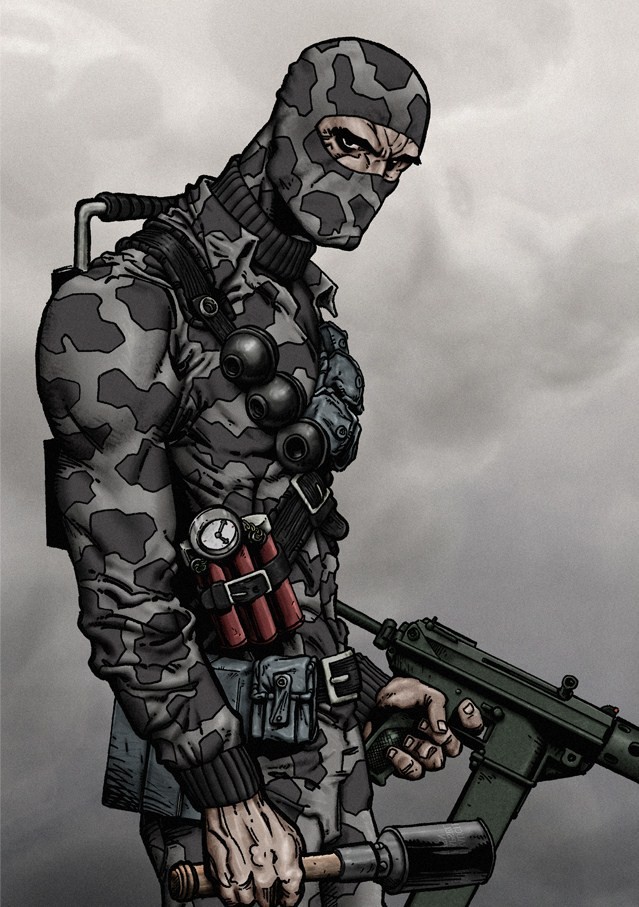Venture City Stories is a supplement for the new Fate Core
game by Evil Hat Productions. It is a 34 page book written by Brian Engard and edited
by Joshua Yearsley. Tazio Bettin handled both the cover and interior artwork
while art direction and layout was helmed by none other than Fred Hicks himself.

The book opens right up with describing Venture City, a Fate
campaign setting designed mostly for street and city level heroes. Well,
superheroes really, but not necessarily of the Justice League or Avengers caliber.
The city itself is one of contradictions with vile villains and shining heroes.
All of that amidst varying shades of grey.
I should point out that Venture City Stories calls itself an
adventure toolkit rather than a campaign book. This is because it is filled
with gaming goodness and ideas that you can pick and choose. Choose to play it
wholecloth and you will find, once players have been introduced and decisions
have been made, the world takes on a life of its own. And, that is part of the
beauty of Fate.
Within the book, several example issues—otherwise, plot
ideas or hooks are introduced. There are also a number of factions and
descriptions of important places and people you’re likely to run into one way
or the other in the fictional city. The issues are handled in Venture City
Adventures just as they are within Fate Core, with the suggestion to select two
immediate issues, two impending issues, or one of each. Some of the sample
issues presented include: Not safe after dark, Are
supers still human?, Gangland powderkeg, and Citywide
blackout. There really isn’t any explanation for these issues and that’s
okay. They are pretty self-explanatory and they are meant to get the creative
juices flowing. So, if you’re looking for someone to plan out your entire
adventure or even the beginnings of one for you, this isn’t where it is going
to happen. There is one example where they take one impending issue and one
immediate issue and show how the two work in conjunction to lay the groundwork
for an interesting and exciting game.
Factions, places, and people are all part of the same
section, although separated out. And, with so few pages, it makes sense. The
Fate Fractal is toyed with here a little bit. Factions are defined not only by
their descriptions, but by new aspects including the slogan and secret
aspects. Factions also have up to six skills: Bureaucracy, Security, and
Violence being three of them. Each of the Factions also include a location
which includes a new issue. They also include people which could be villainous NPCs
or supporting cast members. There isn’t a hard and fast rule on how the
Factions should have their skills figured as far as how many points should be
spent on them. That might have been nice to have, but figuring it is all
relative, your group’s game might have various Factions with widely different
skill spreads to show different levels of helpfulness or threat yet be
completely different from someone else’s game’s Factions.
The book continues with the example setup used earlier to
show how issues can be used, now adding in factions, places, and people. One
thing I noticed is that Faction skills are represented numerically with +3, +6,
etc. However, the people are rated by the adjective associated with their level
of competency: Superb, Great, Good, Fair, and Average. I know this might look
neat to a lot of people—something besides boring old numbers, but it is one
thing I always disliked. Put the numbers in parentheses next to the adjectives
if needs be, but give me the numbers to make it faster and easier, especially
when I am someone who doesn’t play Fate all the time.
While the section on Factions, People, and Places is
excellent background fodder, providing things to slide into your game and
giving you some neat ideas, my main course is served up on page 23 of the PDF.
Here, the team goes into talking about character creation and super powers. I don’t
want to give away too much, but it is very well done. Powers are based on
stunts from Fate Core, but they are also something much more. They go into
detail on adding special effects, drawbacks, etc. This is topped up with yet
more sample characters—all neat and original.
While this book is PWYW (Pay What You Want), I’d definitely
say it’s worth more than the $0 many will surely put into the box. It is a
great read and it is put together very well. It goes quickly, but I think, if
you’re into this sort of thing or even just hacking Fate Core, you will find
yourself turning back to this resource more than a few times in the future.



